We have first quarter 2013 GDP data for about 53% of the OECD countries list. The full World Economy Report is available from the MEMBERS downloads section in the WORLD REPORT tab.
There are a number of interesting observations we can make this month. The first is that whilst the percentage of economies experiencing a single quarters negative growth seems to have subsided from a meteorite rise, the percentage of economies experiencing two consecutive negative quarters seems to be marching resolutely upwards in a worrying trend. At this stage, with only 53% of the data in, we need to wait for more quarterly GDP figures to come in during the course of the next weeks before being able to draw any concrete conclusions from this. Looking at the below chart, it is clear to all but the blind that the world fell into recession according to the classic “two consecutive negative quarters” definition around 1st or 2nd quarter 2012.
When looking at the recovery from the 2008 Great Recession, it is notable that neither the black nor the blue line in the above chart managed to recover to levels which they normally did in the past. After the normal post recession 4 quarter meteoric rise, both lines “stalled out” and resumed their downward trajectories. This is entirely consistent with the recovery behaviour we demonstrated with our “Atypical Global Recovery” REFLECTIONS posting 2 weeks back.
Quarterly GDP data is really a very lumpy, lagging indicator subject to large revisions and to obtain more timely, less revised and better granular monthly views on co-incident world economic activity, we should look to the World Composite Economic Activity Indices we developed and track in the detailed monthly World Economic Report for subscribers. If you recall, we inspect aggregate world trade volumes (imports and exports) as well as world industrial production output figures to form a broad-based composite of current world economic activity of about 83 countries in total making up 97% of all world trade. This is showing a world economy that briefly visited recession territory but now seems on the mend again. It is clear the advanced economies were firmly in another recession following the 2008 Great Recession whilst the emerging economies managed to skirt recession.
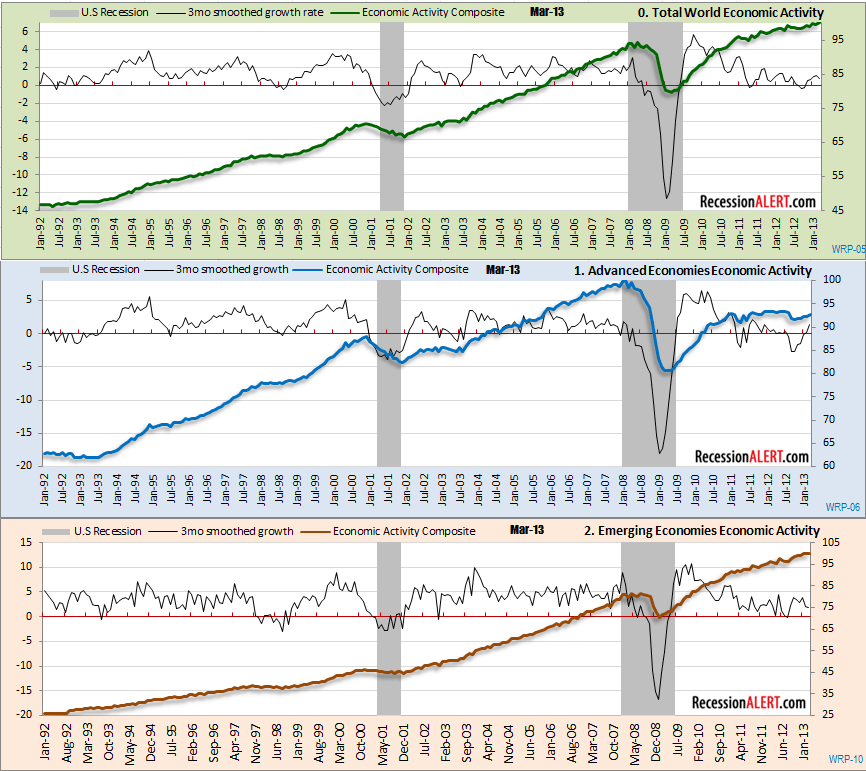
EXTERNAL PUBLISHERS PLEASE NOTE: The below commentary is copyrighted. Please link your clients to this page for them to complete reading the rest of the article.
More illuminating however are the detailed breakdowns from the World Report where we see that the U.S may have briefly encountered recession (corresponding with the near-misses we saw with the SuperModel, the NBER Model, the GDP/GDI Model and the RecessionALERT Weekly Leading US Index) and that Europe and Japan clearly seem to be climbing out of recession. Japan in fact is coming out of a triple-dip recession, Europe is coming out of a protracted double dip.
The European recovery depicted above may leave one with a sense of foreboding, given she has head-faked twice before on the chart. But we think this time is different, purely because of the behaviour of the Euro-area Leading Economic Composite growth shown below, where no head-faking was evident in the downturn of leading data:
With all of the above considerations, we are so far satisfied with the results of the SP500 Market Timing Project which recently de-risked 50% of the holdings after a 5.9% gain and still has 50% in hand to take advantage of further gains likely if the global economy continues to recover on the current trajectory. This adequately takes advantage of the hard run-up since the last correction, whilst acknowledging the risk of an intermediate term correction from overbought levels, but leaving enough on the table to take advantage of further stock market gains should the world economy continue to complete its recovery.

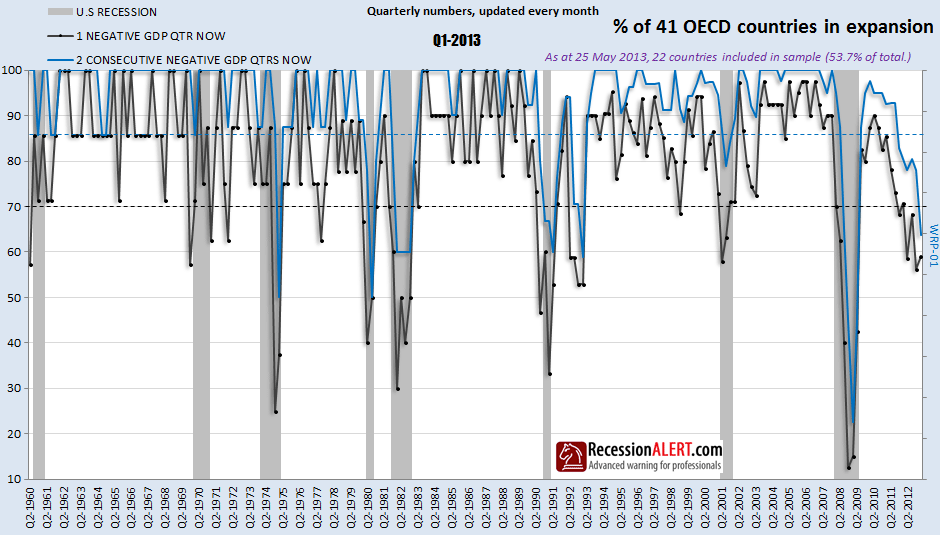
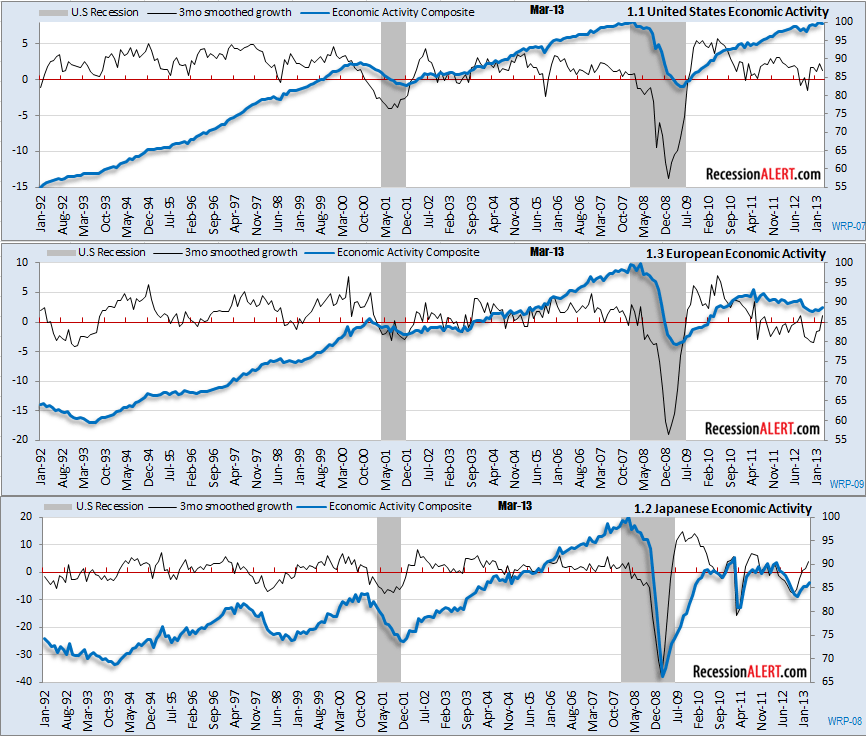
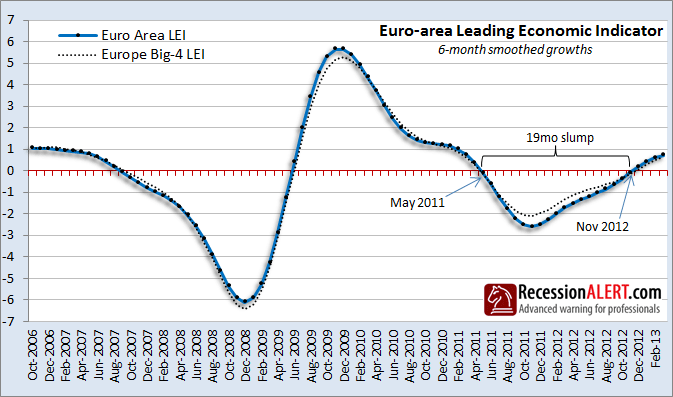
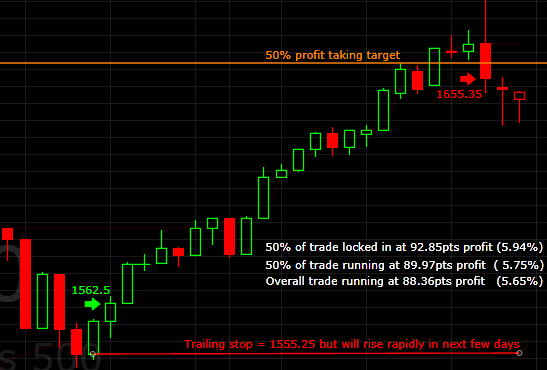
Comments are closed.